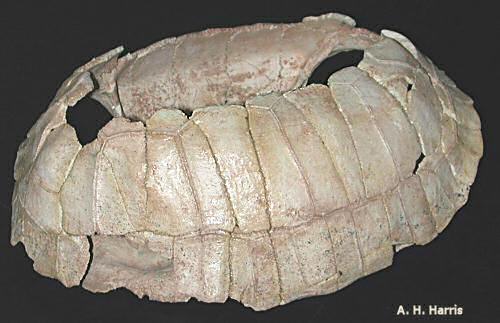
Turtles go back a long, long ways. In fact, back to about the time that mammals arose (and that's a long time ago; we mammals were about two-thirds of the way through our evolutionary history by the time the dinosaurs went extinct 65 million years ago). Although we tend to think of turtles as being aquatic critters, we have a long history of land tortoises in our desert.
Many of you are familiar with the Western Box Turtle, and some of you
know of the endangered Bolsón Tortoise from farther south in the Chihuahuan
Desert. The fossil record, though, shows earlier, and often larger, species of
tortoises, some to several feet long. Even late in the last ice age, species no longer
inhabiting this desert seemed to do well. The Desert Tortoise, now pretty much limited
to the Sonoran Desert, came far into our northern areas during at least two different
times. Farther east, a now-extinct species entered from the Great Plains, and the
Eastern Box Turtle temporarily made it at least as far west as the Guadalupe Mountains.

Contributor: Arthur H. Harris, Laboratory for Environmental Biology, Centennial Museum, University of Texas at El Paso.
Desert Diary is a joint production of the Centennial Museum and KTEP National Public Radio at the University of Texas at El Paso.

Fossil Desert Tortoise (Gopherus agassizii) from the Pleistocene of Dry Cave, Eddy Co., NM. Oblique view, anterior to the right; much of the left side of the carapace is missing. Photograph by A.H. Harris.
Van Devender, T. R., K. B. Moodie, and A. H. Harris. 1976. The desert tortoise (Gopherus agassizi) in the Pleistocene of the northern Chihuahuan Desert. Herpetologica, 32:298-304.
Photograph of Geochelone wilsoni (space down), an extinct tortoise that made it into the Guadalupe Mountains region during the last ice age.